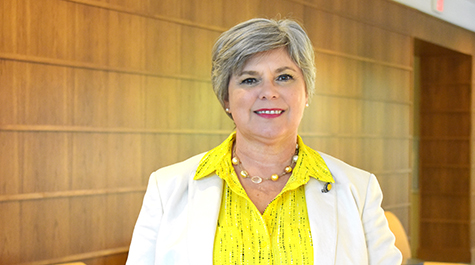Special Support for Students Experiencing Homelessness
Helping students who are homeless is complicated by the difficulty of counting and tracking them. The U. S. Department of Education uses a broad definition of homelessness based on federal law in acknowledgement of that complexity.
"Homelessness is not just a child on the street, but situations where families are doubled up or tripled up, or a teen is couch-surfing or living in a car," pointed out Popp, who cited data that public schools across the country identify more than 1.3 million children and youth experiencing homelessness each school year. Other estimates suggest a classroom of 30 students likely contains at least one living with homelessness. "Our goal is to find students who are homeless, get them into school, and keep them there."
Popp, through Project HOPE-VA, coordinates the Virginia Department of Education’s homeless education programs, managing liaisons in each school district whose job is to identify homeless children and advocate for services. The educational rights of students living with homelessness are outlined in the Education of Homeless Children and Youth Program found in the federal McKinney-Vento Homeless Assistance Act. All schools are mandated to publicly post the rights of homeless students. This includes the right to stay enrolled in their original school even if they’ve moved out of the area due to homelessness or to be enrolled immediately in the school for the attendance area where they are currently sleeping, even if their parents do not have all the paperwork usually required for enrollment, said Popp.
Living in a highly mobile or unstably housed family can lead to a range of negative academic outcomes for children, including increased absenteeism, testing below grade level, disruptive behaviors in class, and low graduation rates. It can be challenging for school teachers and staff to know what kind of housing situation a child returns to at the end of the day, which is why the liaisons Popp coordinates are required to provide both community outreach and continuing education to district staff about student homelessness.
It’s also why Popp makes the argument that close coordination with special education teams is essential.
"We’ve always seen a higher rate of special education designations for students who are homeless compared to their housed peers," she said, adding that the experience of homelessness itself might contribute to this disparity. And, she says, the educational options offered through the federal Individuals with Disabilities Education Act (IDEA) must be incorporated into the supports provided when children living with homelessness have disabilities that require additional specialized instruction to succeed.
Popp has been managing Project HOPE-VA at William & Mary for nearly a quarter of a century, and says she has observed a significant change in awareness about the importance of ensuring children experiencing homelessness have access, stability, and success in school.
"At first, if we were going to present to educators and school administrators about this, we’d have maybe one person in the audience. Now we have a packed room," she said, adding that this is a bittersweet improvement. On the one hand, the growing attendance signifies that people are recognizing this population for its specific needs – but on the other hand, it means that child and youth homelessness is still a reality. And, she pointed out many of the challenges facing students who are homeless also plague other highly mobile groups, such as migrant families and children in the foster care system.
Data suggests that the work Project HOPE-VA is doing statewide has had an impact.
"We were one of the first states to disaggregate graduation rates for students who are homeless, going back to 2008. We’ve seen an increase in their graduation rate from approximately 50 percent to 70 percent; this is a higher rate of improvement than the overall state increase," she said.
Popp just completed a series of trainings to prepare Virginia homeless liaisons and other school staff to better serve students facing homelessness in the coming year. In addition to trainings and hiring needed support staff, Popp has an ambitious agenda for the coming year — she wants to find a way to reduce and improve systems to address youth homelessness in partnership with the Governor’s Coordinating Council on Homelessness. Under previous Governors, the Council has focused on chronic homelessness and veterans homeless. Popp is a member of the Council’s Youth Committee whose proposal to study strategies to end youth homelessness for young people ages 14 to 24. Popp is hopeful that the added attention on youth will assist this vulnerable population. This group includes foster children who age-out of the foster care system and are at high risk to experience homelessness. Because of the work done by Project HOPE-VA to improve educational stability for students who are homeless, Popp has been working alongside the Virginia Department of Social Services to improve stability for children in foster care since 2010. The existing partnerships and relationships built over the past eight years will be important as we begin implementing the tasks outlined in our proposal.
Ultimately, she says each child and family experiencing homelessness is unique and the assistance needed varies greatly. "Our liaisons are doing a phenomenal job of wrapping supports around these children. They look at those varying needs and very often go far beyond the legal mandates to help students meet with success," she says.
